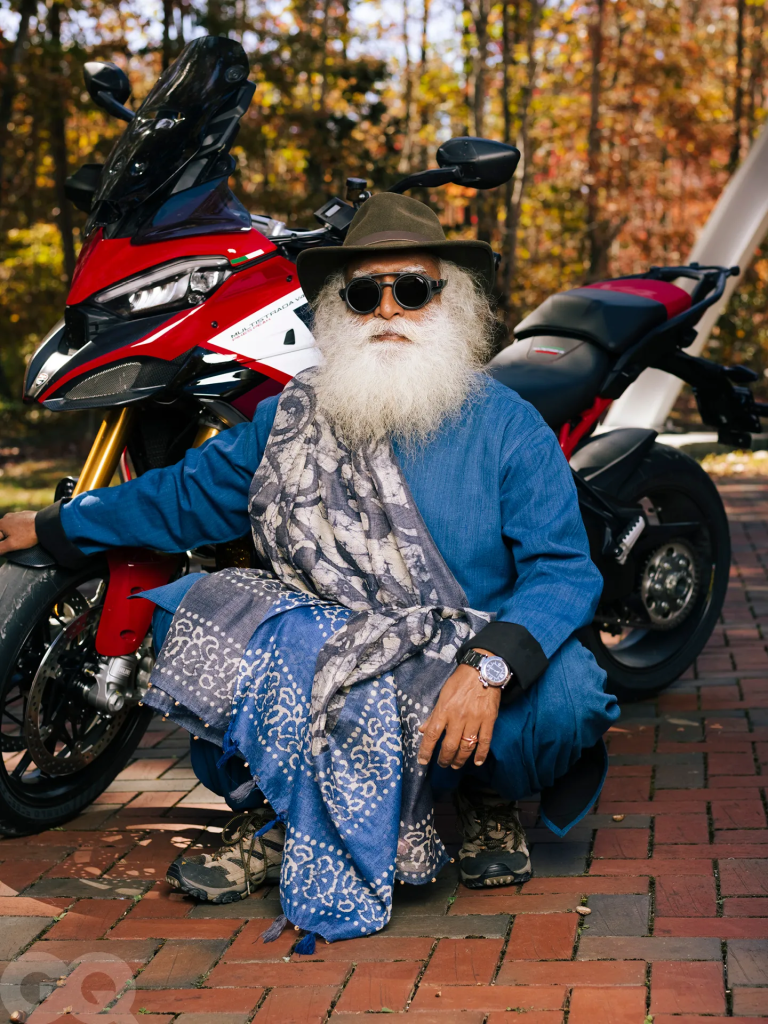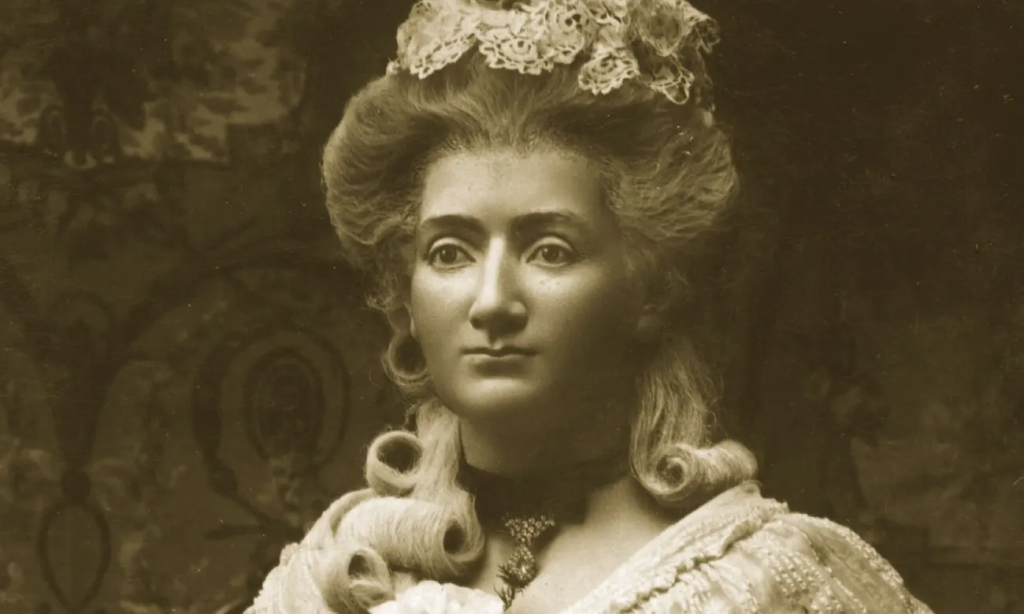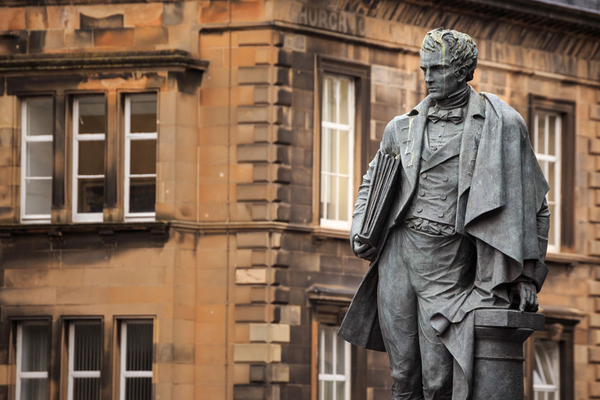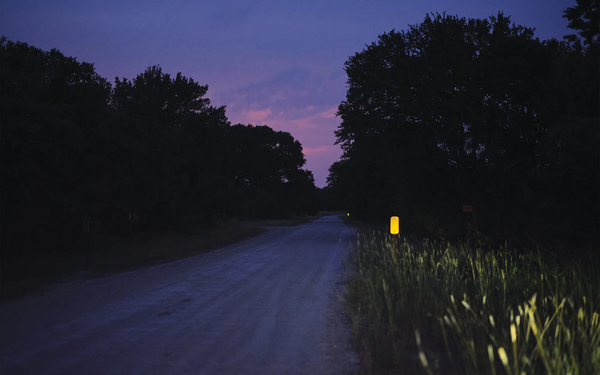An inside look at Sadhguru, the internet's favorite mystic

Stephen Rodrick writes for GQ magazine: "The guru was late. Very late. This was odd, because the guru is all about being ten minutes early. Show up tardy to one of his sessions and you will be stuck outside of enlightenment with your shoes in your hand. I thought about getting mad or, more specifically, hangry. It was my sixth day without meat or coffee on this week-long yoga retreat in rural Tennessee, and my contraband stash of caffeine pills and prosciutto had long been exhausted. Just then came the hellish noise of an engine, and a motorcycle rose over a crest. It was the guru. He rode toward us, his blue robe and white beard flowing behind him, and brought his Ducati to a stop so that it would be perfectly framed behind him on camera."
The head of a virus database appears to have invented an alter ego

From Martin Enserink and Jon Cohen in Science magazine: "When Jeremy Kamil started to sequence samples of the coronavirus in the spring of 2020, it was clear where he should deposit the genetic data: in GISAID, a long-running database for influenza genomes. Kamil, a virologist at Louisiana State University’s (LSU’s) Health Sciences Center Shreveport, says he quickly struck up a friendly relationship with a Steven Meyers, who used a gisaid.org email address. The two often exchanged emails and talked on the phone, sometimes for hours, about the pandemic and data sharing. Meyers said he had previously worked at Time Warner and had changed jobs after his boss at that company, Peter Bogner, launched GISAID in 2008. Meyers was born in Germany and living in Santa Monica, California, just like Bogner, whom he would call “our big boss” and “the Big Cheese.” Over time, things got a little weird, Kamil says. Emails he sent to Meyers were sometimes answered from Bogner’s email account."
Inside a Victorian fraud artist's palatial sunken estate

From Messy Nessy Chic: "Welcome to the abandoned underwater leisure room built by mining magnate Whitaker Wright who made his fortune in America before returning to England. The circular domed room, about 20 feet in diameter, was one of his last lavish projects installed at his ostentatious Surrey estate, which also boasted a theatre, observatory, velodrome, private hospital and stables to accommodate more than 50 horses. On the apex of the dome, stands the statue of Neptune, through which historians say a pipe led up to the surface for expelling excess cigar smoke. A Victorian “Bernie Madoff”, Wright was convicted of fraud and faced a seven-year imprisonment after a career of fooling trusting investors to back non-existent mining projects while he poured their money into his estates and follies. Immediately after he was sentenced, he committed suicide by swallowing cyanide."
When deadly steamboat races enthralled America

John Dougherty writes: "Defined broadly as any vessel powered by a steam engine, the term “steamboat” is more often used to describe paddle wheel-propelled crafts that roamed the rivers of the United States, particularly the Mississippi, in the 19th century. An early prototype set sail in 1787, but it was only in 1807 that the first commercially successful steamboat made its debut. High-stakes—and sometimes deadly—steamboat races followed soon after. The 19th-century humorist Charles Godfrey Leland said about steamboat racing. “From the days of the Romans and Norsemen down to the present time, there was never any form of amusement discovered so daring, so dangerous and so exciting as a steamboat race,” he wrote in 1893, and nobody but Americans could have ever invented or indulged in it." What some have called the first steamboat race in American history occurred in July 1811.
The fascinating life of Madame Tussaud, inventor of the wax museum

Edward Carey writes at the Guardian: "Tussaud was born Marie Grosholtz in Strasbourg, France in 1761. Tussaud was trained by a Swiss master of wax anatomy, Philippe Curtius. Curtius and his young pupil moved to Paris where, in time, she would model not internal body parts but instead the likenesses of Voltaire, Louis XVI, Benjamin Franklin and Jean-Jacques Rousseau. She was in Paris during the Revolution and, on 12 July 1789, a mob stole the wax busts of the Duc d’Orleans and finance minister Necker from their exhibition, and paraded them about the streets in a mock funeral. The waxworks became a very dangerous place, as it was illegal to have busts and figures of people no longer deemed acceptable. Towards the height of the Terror, Tussaud was arrested and imprisoned. When she was released, to cast the guillotined head of Robespierre, the Revolution was over."
95 million year old dinosaur skull is first of its kind in Australia

From IFLScience: "Titanosaurian sauropod dinosaurs, including Patagotitan, roamed around during the Cretaceous period in pretty much every corner of the world. Despite their global distribution and abundance, only a few species have been well preserved with more than one specimen found in the fossil record, and even fewer have been found with skull fragments. One species, Diamantinasaurus matildae, was known from three separate specimens, and now a fourth has been discovered in Australia that includes a near-complete skull with some interesting, previously unknown, features. It's rare to find the skull of a sauropod. Despite being made up of six individuals, the Patagotitan currently on display at the Natural History Museum London had to have a replica head based on similar species as no real head of a Patagotitan has ever been found. The researchers believe that these bones lend support to the theory that there was a land bridge between what is now Australia and South America linking the continents via Antarctica."
Crazy pizza-making skills
Wow skills pic.twitter.com/iNaVXTrqST
— CCTV IDIOTS (@cctvidiots) April 26, 2023



